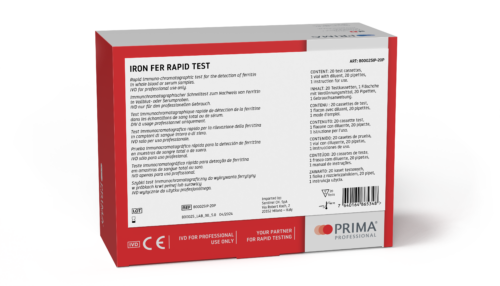
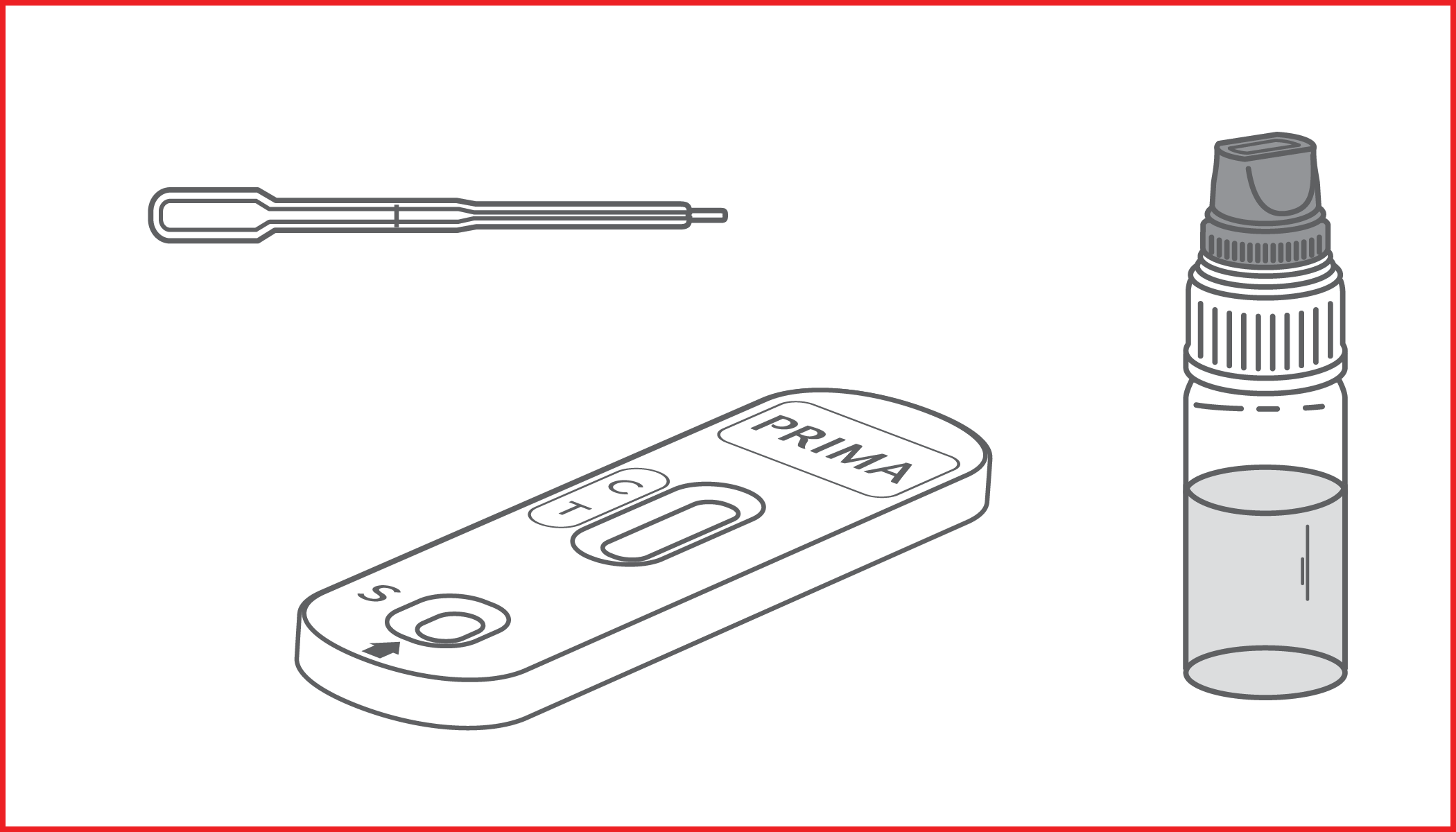
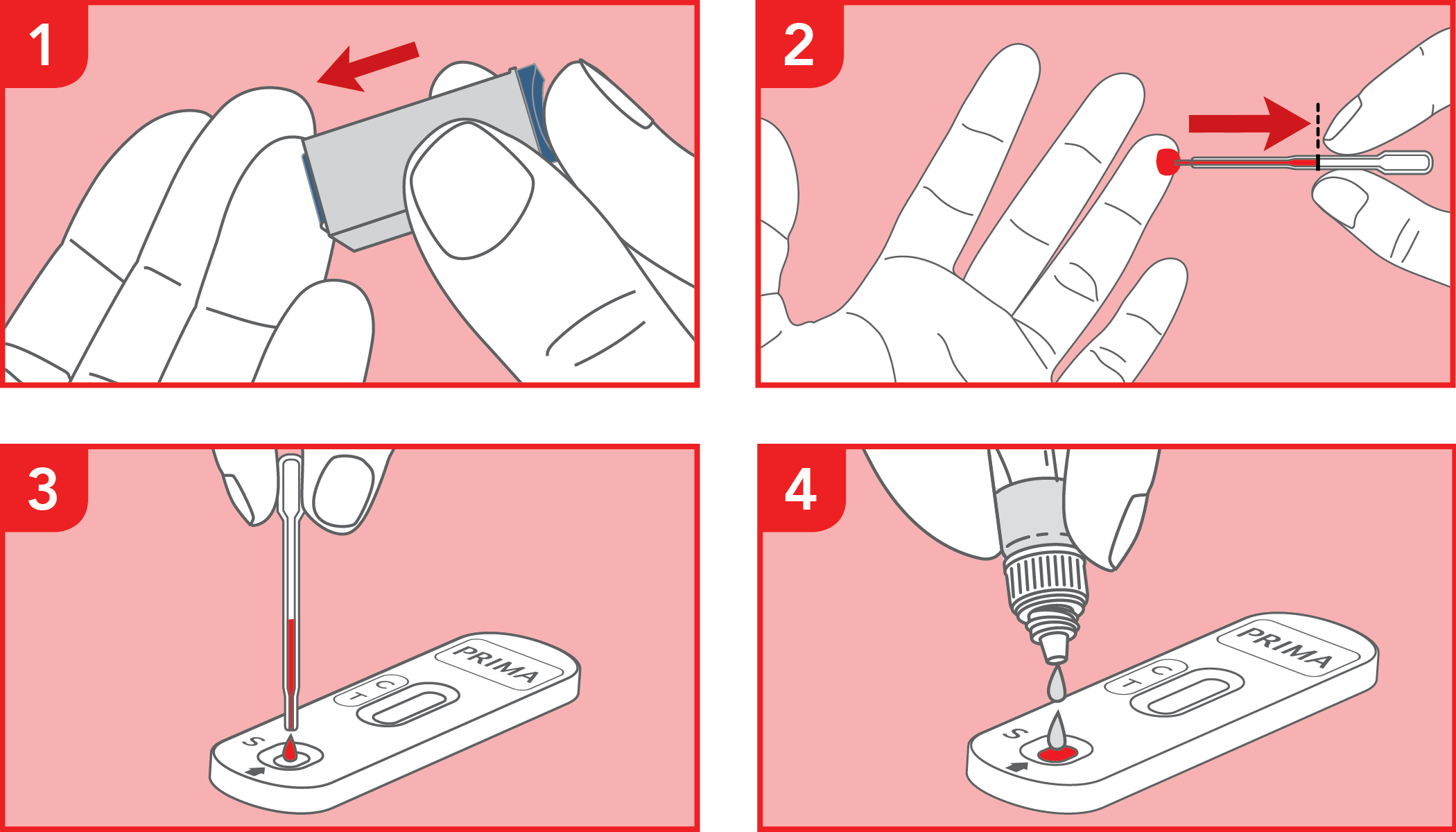
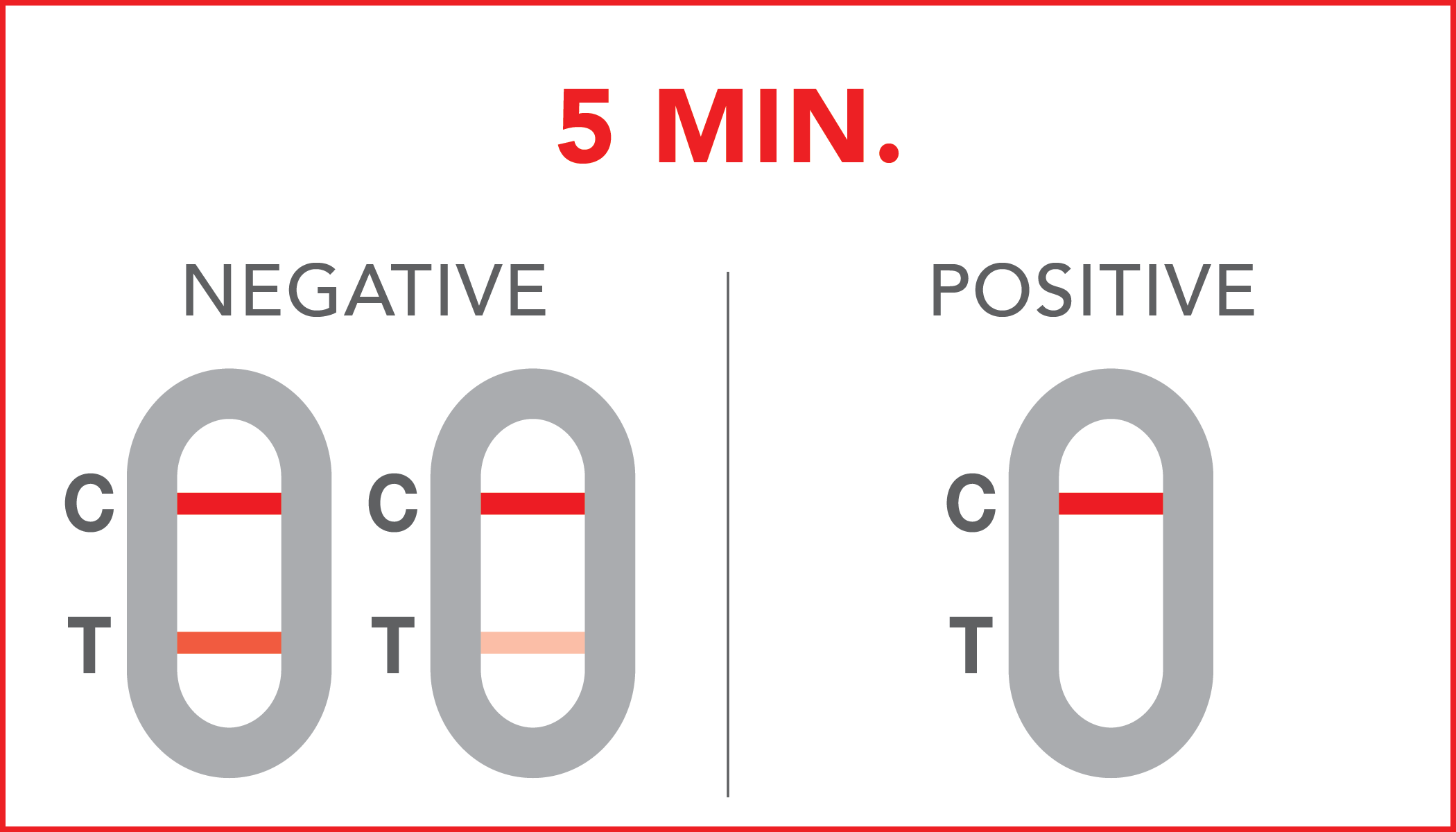
Rapid immunochromatographic test for the detection of ferritin levels in whole blood or serum samples. IVD for professional use only.
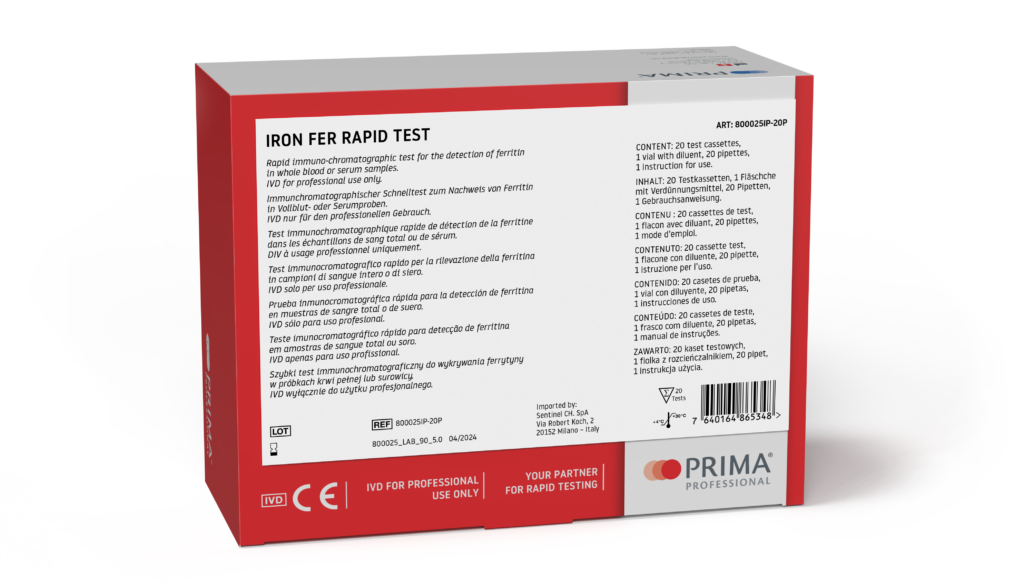
Ferritin is the protein used to store iron in the body: the dosage of this protein is an excellent indicator of the amount of iron available.
read moreIron is an essential metal for our body and it is essential for the transport of oxygen in the blood, for the multiplication of cells and for building the structure of tissues and organs. However, if in excess, it turns out to be toxic: this is why our body has a system to introduce iron from the outside and keep it stored inside the cells in a non-excessive form – and therefore non-toxic. Low levels of ferritin in the blood indicate the absence of iron in the deposits, a condition that precedes the development of anemia.
Easy to use
Results in 5 minutes
Rapid support to healthcare personnel
IRON FER RAPID TEST is useful for professionals to check the body’s iron reserves.
read moreA decrease in blood ferritin levels can be caused by conditions and diseases such as anemia, pregnancy, bleeding, impaired iron absorption, celiac disease and Helicobacter pylori infection.
IRON FER RAPID TEST is an immunochromatographic device that detects ferritin values in blood below the cut-off of 30 ng/mL.
| Cut-off | 30 ng/mL |
| Specificity | 100% |
| Sensitivity | 100% |
| Accuracy | 100% |



Negative: ferritin levels in the blood are above 30 ng/mL. Cases where the ferritin concentration is just below this value (27 ng/mL-29 ng/mL) can give a similar result.
Positive: ferritin value in blood is lower than the cut-off, further diagnostic investigations are recommended.
1. MacKenzie E.L., Iwasaki K., Tsuji Y. (2008)Intracellular Iron Transport and Storage: From Molecular Mechanisms to Health Implications. Antioxid Redox Signal. 2008 Jun; 10(6): 997–1030.
2. Chiancone E., Stefanini S. and Antonini E. (1980),“Ferritin: structural and functional aspects in Radioimmunoassay of Hormones, Proteins and Enzymes”, Proc. Int. Symposium. Excerpta Medica Amsterdam : 197-203.
3. Cullis JO, Fitzsimons EJ, Griffiths WJ, Tsochatzis E, Thomas DW; British Society for Haematology (2018). “Investigation and management of araised serum ferritin. Br J Haematol. 181(3):331-340.
4. Simon T.L., Garry P.J., Holper E.M. (1981) “Iron stores in blood donors”. JAMA 245 n°20 : 2038-2043.
5. Morse E.E., Cable R., Pisciotto P., Kakaya R., Kiraly T. (1987), “Evaluation of iron status in women identified by copper sulfate screening asineligible to donate blood”. Transfusion 27 n°3 :238-241.
6. Jacob RA, Sandstead HH, Klevay LM, Johnson LK (1980).” Utility of serum ferritin as a measure of iron deficiency in normal males undergoing repetitive phlebotomy.” Blood.56(5):786-91.
7. Coenen J.L.L.M., Van Dieijen-Visser M.P., Van Pelt J., et al. (1991) “Measurement of serum Ferritin used to predict concentrations of iron in bone marrow in anemia of chronic disease”. Clin. Chem. 37 : 560-563.
8. Witte D.L., Dick F.R., Goeken J. et al. (1985) “C-reactive protein (CRP) aids interpretation of serum Ferritin (FRTN) (Abstract). Clin. Chem. 31 :1011.
9. Witte D.L., Angstadt D.S., Davis S.H., Schrantz R.D. (1988) “Predicting bone marrow iron stores in anemic patients in a community hospital using Ferritin and erythrocyte sedimentation rate. Am. J. Clin. Pathol. 90 : 85- 87.
10. Alan E. Mast, Morey A. Blinder, Ann M. Gronowski, Cara Chumley, Mitchell G. Scott. (1998). “Clinical utility of the soluble transferrin receptor and comparison with serum ferritin in several populations”. The American Association for Clinical Chemistry.
11. Weiss G., Goodnough L.T. (2005). “Anemia of chronic disease. N Engl J Med. 352(10):1011-23.
12. Munoz M. et al. 2017. Current misconceptions in diagnosis and management of iron deficiency. Blood Transfus. Sep;15(5):422-437.
The test has been carried out correctly when the instructions for use are followed. It includes the reading time and the interpretation of the results shown at the "RESULTS INTERPRETATION" section of the instructions for use.
A colored line will appear at the control region (C) on the test device, showing that the test performed correctly. The absence of the colored line suggests to repeat the test with a new device and a new sample.
The color and intensity of the lines do not affect the interpretation of the result. The test has to be considered negative regardless of the color intensity of the test line (T).
Check product availability with the local representative in your country
